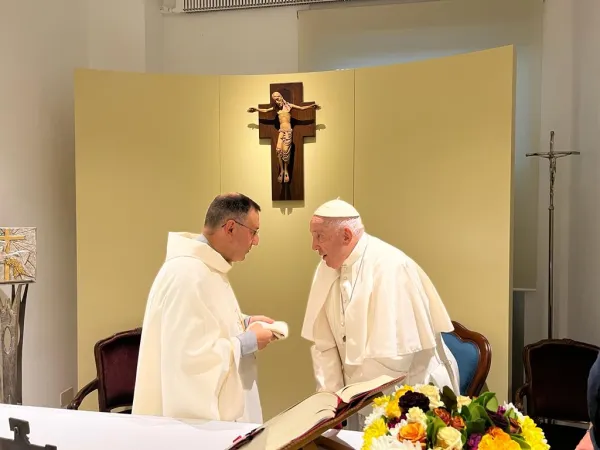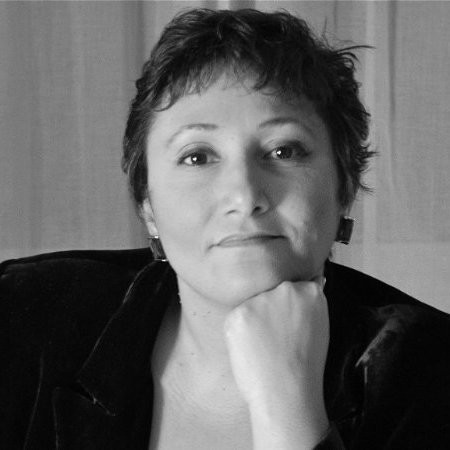
Amidst the bustling chaos of Agostino Gemelli Polyclinic, one name stands out—Don Nunzio. Everyone knows where his office is, a place filled with memories, images, gifts, files, books, and faith. For years, he has been a pillar of support for those in need at Italy's largest hospital, which has seen the admission of Popes and employs around 6,000 people while caring for 1,600 patients.
Don Nunzio Currao is affectionately known as a "spiritual resuscitator" at Gemelli. Officially, he serves as a Pastoral Assistant at the Catholic University of the Sacred Heart, having graduated in 1967 and was ordained as a priest in 1993. In practice, his primary focus is on providing care for the hospital's employees, standing alongside them during the pandemic and supporting them through their daily struggles, which are often overlooked by the media.
However, Don Nunzio has had the unique opportunity to encounter two Popes who were hospitalized at Gemelli. What are his memories of these encounters?
Remembering the coincidence of John Paul II's first hospitalization in 1981 after the assassination attempt, which occurred while my mother was also hospitalized, holds an important place in my memory. Since childhood, I have always held great admiration for the Pope. Providentially, I was granted the opportunity to meet him several times and even receive ordination as a priest from him. Due to my role as a volunteer chaplain, first as a vice-pastor for ten years and then as a pastor for 15 years, I frequently found myself at this hospital, assisting the chaplains. This involvement was influenced by my experience of suffering, which opened my eyes to the vital importance of spiritual care for the sick. As John Paul II once asserted, if humanity is the fundamental path of the Church, then the person who suffers holds an even more profound significance. In such moments, perhaps subconsciously, even those who previously prioritized material concerns due to the hectic pace of life naturally turn to spiritual matters when faced with suffering and pain.
Reflecting specifically on John Paul II, what struck me was the image of a Pope enduring suffering in the hospital. Although we have become more accustomed to this reality with Pope Francis, the sight of John Paul II, a Pope admitted as a patient among the sick, was truly unprecedented. It profoundly impacted both the patients and myself. While society attempted to cast out suffering and illness, the Pope, on the contrary, normalized these experiences by personally facing them and assisting others in confronting them.
And what has changed with Pope Francis?
During John Paul II's hospitalizations, with the exception of the last two emergencies, the announcements were primarily made to convey greetings upon his arrival or departure. The Pope would extend his greetings to the authorities and those involved in providing religious assistance to the sick.
However, with Pope Francis, there has been a notable shift in approach. While he also shares in the experience of suffering and pain, he endeavors to live through it while minimizing any disruption to the hospital's routine.
John Paul II, humorously referring to Gemelli as his own office, essentially established a presence there. Throughout his hospital stays, he would continue to receive visits from bishops, politicians and engage in work, resulting in movement and necessitating security measures to oversee everything and everyone.
In contrast, Pope Francis enters quietly. For instance, it was only during his third hospitalization that he departed through the main entrance; otherwise, he would utilize designated access for his arrivals and departures. Surprisingly, upon leaving, he expressed his desire to pass by, greet people, and express his gratitude, knowing that many individuals wished to meet him. The hospital experienced less disruption while maintaining a sense of empathy, even with the presence of the media. During the previous two hospitalizations, medical bulletins were provided by the Vatican Press Office rather than the attending doctors. Only in this third hospitalization did the Pope agree to a press conference.
However, there have been no images like those of John Paul II in his "patient attire," in a robe, starting with the historic one after the assassination attempt, which had the significance of saying: the Pope is alive. We don't have "patient images" of Pope Francis.
During his public appearances at the hospital, he visited the adjacent pediatric oncology and neurosurgery wards. However, to my great surprise, one of the most beautiful memories that will forever remain in my heart was my unexpected encounter with him. I had gone to deliver two letters as part of the scheduled farewell greeting before his departure. In previous hospital stays, this ritual took place in the morning, followed by the Pope's departure from the hospital. But on this occasion, upon my arrival, I was informed that the Pope wanted to speak with me, and thus I was asked to wait.
Upon entering his room, I saw him as a patient seated in a chair, donning the same gown worn by everyone else, with a blanket covering his legs. We exchanged a few words and engaged in discussions, and then he kindly requested that we celebrate together the following morning. Surprisingly, it was the Feast of the Sacred Heart, specifically June 16.
Despite the official farewell scheduled for the 15th, I had this unique experience the next morning. Pope Francis had never before celebrated the Eucharist or allowed it to be celebrated in his presence. However, on this occasion, he decided to receive communion before his departure, along with the hospital staff and those who had operated on him. Additionally, he entrusted me with the responsibility of delivering the homily. This was an unprecedented and unimaginable moment for me—to celebrate the Eucharist with the Pope, my bishop, on the World Day of Prayer for the Sanctification of Priests. The Pope's decision was truly inspiring, and I approached the celebration with significant serenity.
Following the Mass, the Pope asked me to take the Eucharist and bring it to a child in the pediatric oncology ward who had not yet received her First Communion due to being autistic, as the parish priest had encountered some difficulties. The Pope instructed me, saying, "Go and bring the Communion on behalf of the Pope." When the child's mother saw me arrive and I explained that the Pope had sent me, she was overcome with emotion, almost fainting in disbelief. I even recorded a video of the mother expressing her gratitude to the Pope, which I subsequently sent to him. These are the kind of experiences that leave an indelible mark, never to be forgotten.
This interview was originally published on ACI Stampa.

Angela is Editor-in-Chief of ACI Stampa. Born in 1965, she holds a philosophy degree and began her Vatican journalism career at Vatican Radio in 1988. She has worked in TV and newspapers and covers the Vatican for various Italian and international media. Angela has published several books with Libreria Editrice Vaticana and TAU on Popes John Paul II and Benedict XVI.
angela.ambrogetti@acistampa.it







